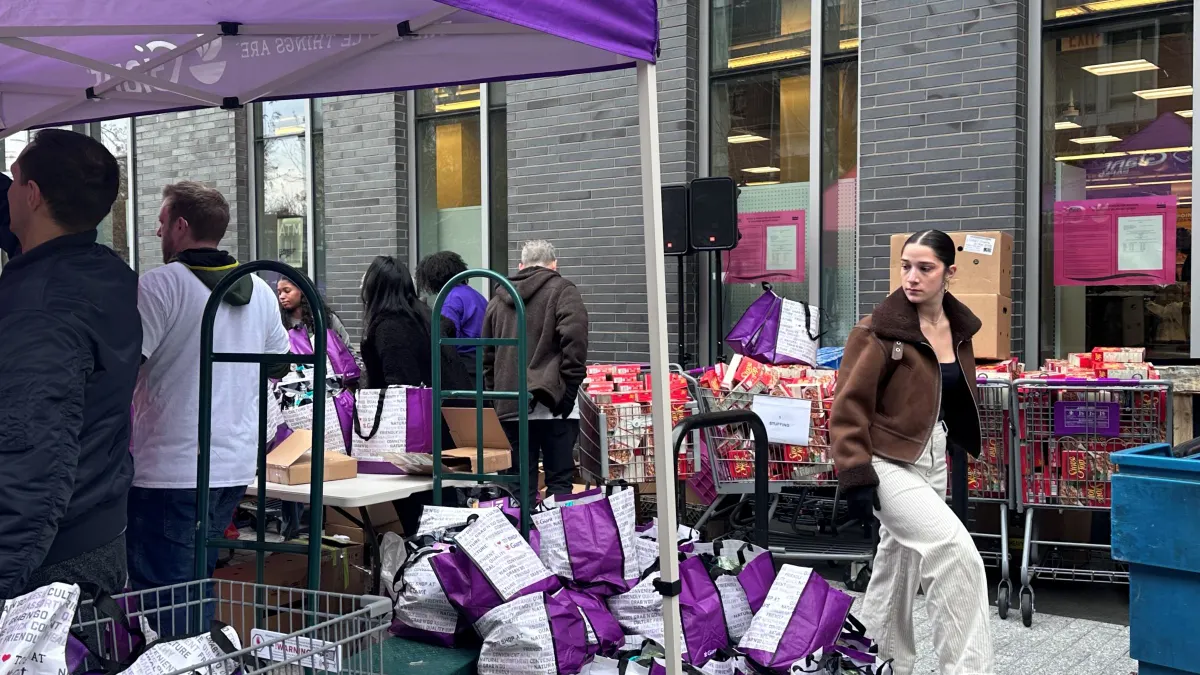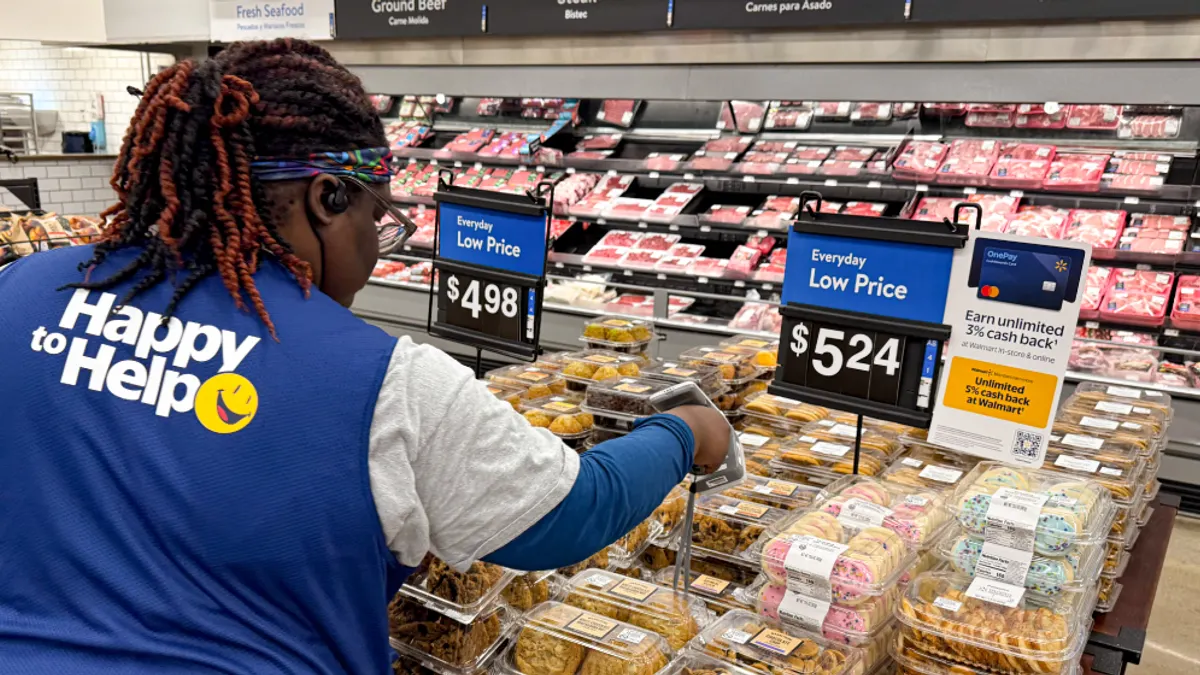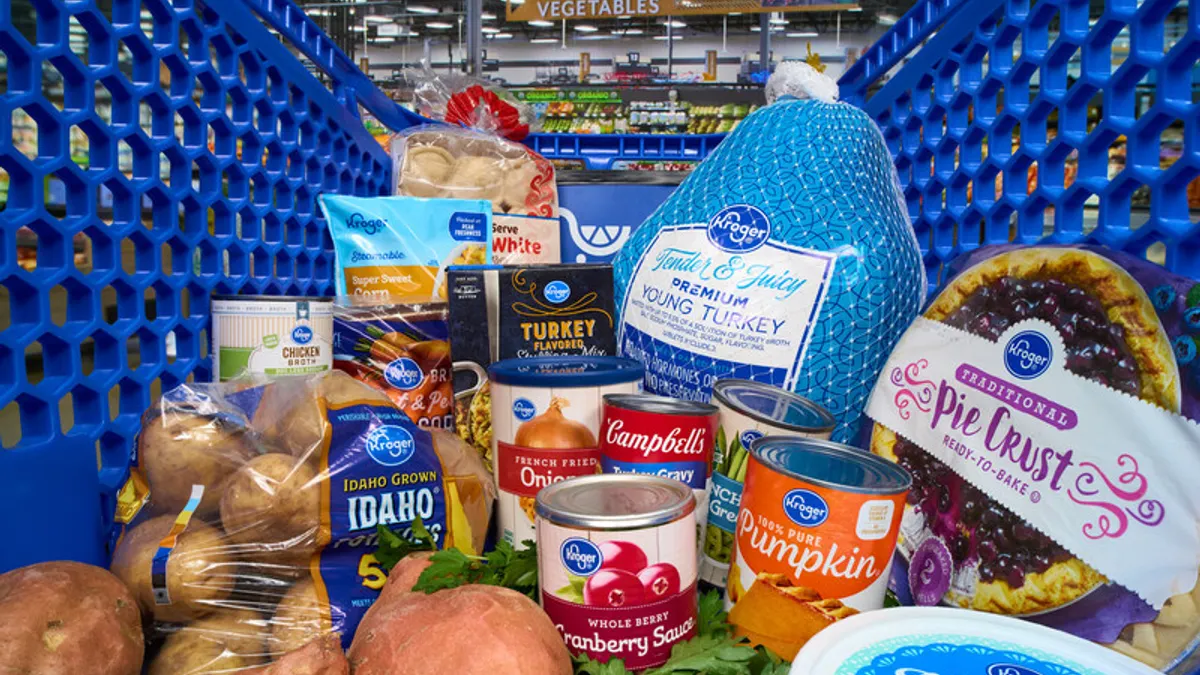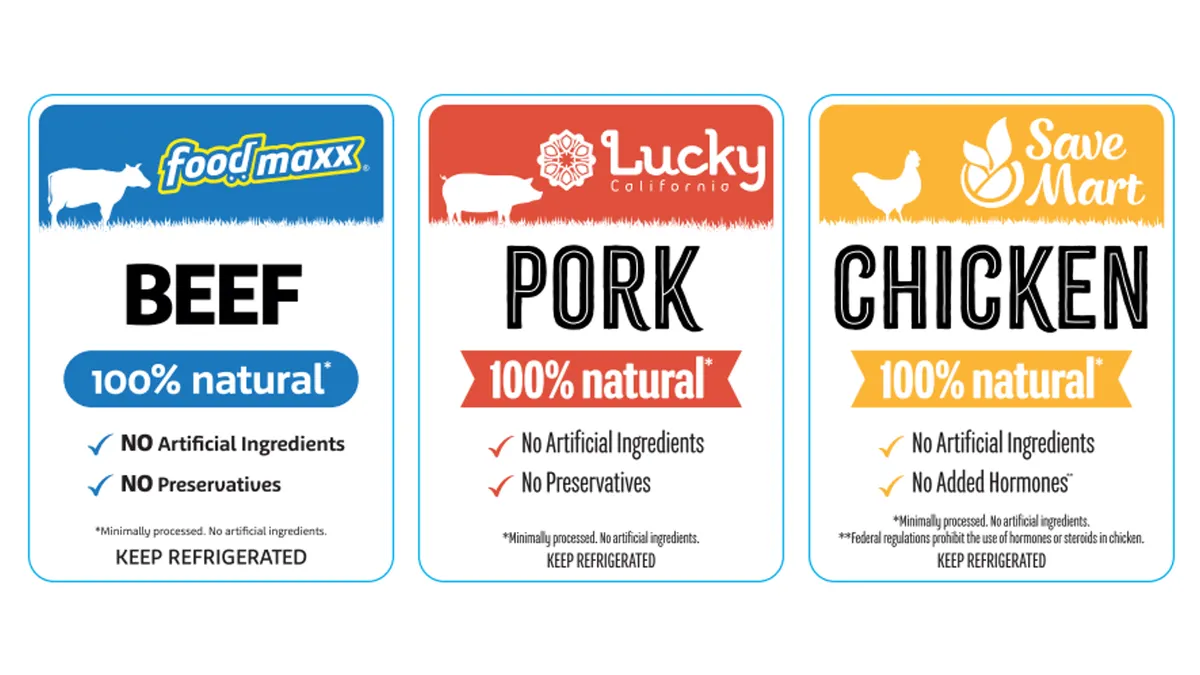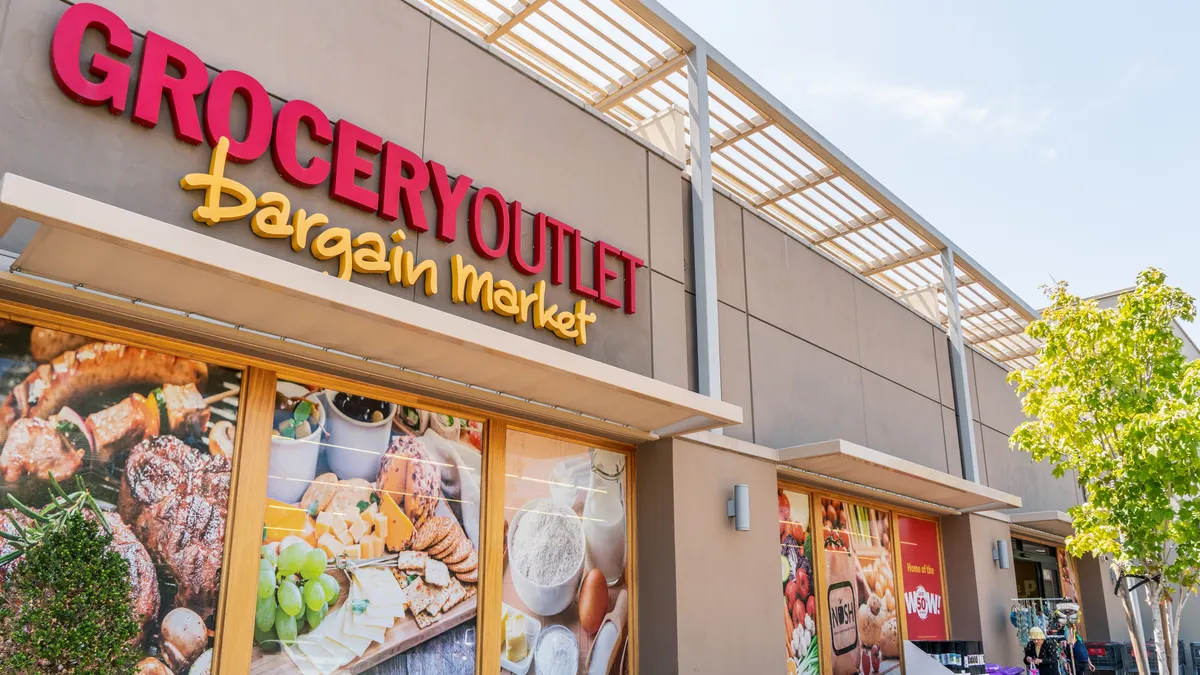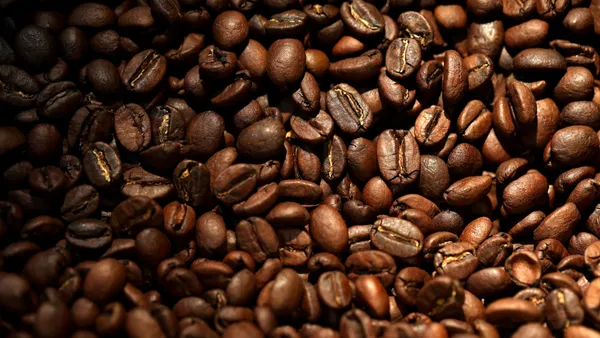This year kicked off with long-awaited news about Whole Foods, with reports stating Amazon plans to build more physical store locations in suburbs and areas the grocer has not yet entered, including Idaho, Wyoming and Utah. The new stores are reportedly going to be up to 45,000 square feet, a larger format that signals plans to use stores to fulfill e-commerce orders.
The announcement is notable after a somewhat underwhelming first full year for Whole Foods with Amazon at the helm. But what exactly do new stores in new states mean for Amazon?
“Amazon expanding Whole Foods’ physical footprint in 2019 could be the big move that everyone in the grocery space was worried about when Amazon first acquired Whole Foods,” Matt Lindner, senior e-commerce analyst with Mintel, told Grocery Dive in an interview. “By giving more shoppers more access to Whole Foods, Amazon is threatening to take a bigger share of the burgeoning online grocery market since most online grocery orders are still fulfilled by stores and not traditional fulfillment centers.”
Lindner said he likes the move because, on the surface, it doesn't appear to be entirely focused on people who traditionally buy groceries online. The plan indicates Amazon aims to make Whole Foods appealing to more shoppers. But with less than 500 locations nationwide, it also raises questions about just how ambitious the company needs to be in order to achieve its omnichannel goals.
“Amazon expanding Whole Foods’ physical footprint in 2019 could be the big move that everyone in the grocery space was worried about when Amazon first acquired Whole Foods."

Matt Lindner
Senior E-commerce Analyst, Mintel
And even though expanding the physical footprint is a major game-changer for the retail giant in the grocery space, according to experts, there is still more that Amazon can do when it comes to product assortment, brick-and-mortar expansion and executive level changes.
An underwhelming 2018
Last year, Amazon further integrated its Prime loyalty program into stores, offering discounts on select products while also expanding home delivery to 60 markets and pickup to 20 markets. Whole Foods products and special offers appeared more prominently on Amazon.com, while stores incorporated more price cuts and value messaging.
Although Amazon reported that customers are snapping up its various offers, these weren't the sort of transformative moves many in the industry expected. Grocery executives — including those with Natural Grocers and Sprouts Farmers Market, which were tabbed as low-hanging fruit for a reinvigorated Whole Foods — noted in earnings calls that the chain was not impacting their sales.
Prior to reports of Whole Foods' store expansion, Lindner said Amazon's takeover has so far been underwhelming.
“You’re not seeing Prime members ship all their groceries from Whole Foods," he said. "You’re not seeing spending shifting from other retailers to Whole Foods specifically because Amazon owns it. I don’t know if it’s the perception about Whole Foods, or that people have a limited for how much Amazon they want, but it really hasn’t done what we thought it was going to.”
Still, Lindner gives Amazon some credit for taking it slow in 2018, saying that it was a year for Amazon to evaluate what it has with Whole Foods and how the grocer fit into its broader business, which still includes multiple grocery efforts such as Prime Pantry and Amazon Fresh.
Others believe Amazon should be further along in its transformation of the chain.
"Basics and commodity products still cost way more than at rivals like Target, and this is one of the reasons perceptions that Whole Foods is needlessly expensive have persisted," Neil Saunders, managing director with GlobalData Retail, wrote in an email sent to Grocery Dive. "Such expense is not justified by store experience nor by customer service, both of which remain lackluster."
It’s anybody’s guess what Amazon’s next move will be, but Brittain Ladd, a former Amazon executive and global business strategy and supply chain consultant, told Grocery Dive in an interview that it is unfair to judge Amazon at this early stage.
“It’s going to take Amazon several years to do anything in grocery," he said. "Amazon plans everything in terms of a decade.”
There’s also the possibility that Amazon took it slow last year to gather data and learn more about its newly acquired customers and how they shop. Doug Stephens, founder and president of Retail Prophet, told Grocery Dive that there might be a reason to question Amazon’s efforts with Whole Foods so far — if you believe Amazon bought Whole Foods to sell groceries.
“The problem with that logic, from my point of view, is that I don’t believe Amazon bought Whole Foods to sell groceries at all,” Stephens said. “I really and truly believe that Amazon regards the grocery category as a tremendous well of data about individual consumers and households,” Stephens said.
He expects Amazon will take the time it needs to understand the type of data and insights it now possesses, and what to do with that wealth of information. Now that Amazon has a year of Whole Foods data in the books, Stephens noted, it’s possible that the retailer will introduce more personalized shopping experiences, offers, discounts and more to Whole Foods customers in the coming year.
The need for more brick-and-mortar stores
Amazon is going to have to dramatically increase the number of Whole Foods locations if it wants to make any kind of impact in the online grocery market, Lindner said. Whole Foods is on the right track in targeting smaller cities and suburbs, he noted, and could also target some underserved rural areas.
There are also benefits to Amazon's broader grocery platform to consider, said Stephens. Despite Whole Foods' limited reach, Amazon can use the chain and its various distribution centers to extend its reach, make its supply chain more effective and ultimately touch more consumers. Amazon’s recently unveiled plans to expand reinforces his belief that Amazon sees Whole Foods as a distribution hub for its business, with services like Amazon Fresh and Prime Pantry set to benefit from the extra storage and logistical capacity.
"If Amazon acquired Target, it would have around 1,900 stores immediately, and in opening additional Whole Foods locations, Amazon could very quickly reach 2,000 Whole Foods locations operating in the U.S."

Brittain Ladd
Global business strategy and supply chain consultant
Amazon's online grocery business could use the boost. According to a report from Edge by Ascential, grocery sales on Amazon.com grew by 45% last year — an impressive figure, but a drop from the 60% growth the company achieved in 2016-2017, according to the firm.
Moreover, while Amazon sells a lot of coffee pods, granola bars and beverage cases, it has struggled to sell fresh items and to build the sort of large, profitable orders that competitors like Walmart see. According to a report by Brick Meets Click, shoppers use grocery delivery and pickup services more frequently and spend more than twice as much per order than on Amazon. On a monthly basis, shoppers that use supermarket delivery and pickup services spend $200 compared to just $74 among Amazon grocery shoppers.
In private label, a category where most major grocers have double-digit market share, Amazon has just a smattering of offerings, with grocery comprising less than 2% of its store brand portfolio, according to Coresight Research. Whole Foods' 365 Everyday brand, which now features prominently on Amazon.com, increases its store brand presence, but other brands like Happy Belly have posted middling sales.
"Amazon is still a long way off from where they had hoped grocery sales would be by now," Edge by Ascential noted in its recent report.
Even with new stores planned, Amazon has a long way to go in growing Whole Foods if it wants to achieve any kind of grocery dominance or distribution benefit. Whole Foods' 475 locations pale in comparison to the footprint of other national grocers, including Kroger's nearly 2,800 stores in the U.S., Albertsons' more than 2,300 locations and Walmart's nearly 5,000 U.S. stores.
Ladd calls for Amazon to expand Whole Foods to at least 2,150 stores to compete with national grocers. And the best way to make this happen is to make another major acquisition, such as Target. He argues that Amazon has to do something drastic to close the gap between Whole Foods and other grocers.
“If Amazon acquired Target, it would have around 1,900 stores immediately, and in opening additional Whole Foods locations, Amazon could very quickly reach 2,000 Whole Foods locations operating in the U.S.,” Ladd said.
New products, new leadership
Whole Foods has long stood out for its product assortment, leading the way in stocking local brands, fresh and organic produce, free-from and gluten-free products along with its wallet-friendly 365 brand. While the specialty assortment appeals to loyal Whole Foods shoppers, though, it may not attract a wide spectrum of shoppers.
Ladd sees the product assortment as a major component to store expansion and said that Amazon should overhaul Whole Foods' current product assortment.
“It’s inconceivable for anyone to think that Amazon can grow Whole Foods using the same products and using the status quo," Ladd said. "In order for Amazon to grow Whole Foods, they literally have to change it. Keep the name, but it’s going to have to become more like a Kroger or Albertsons."
Reports have detailed internal struggles between Amazon and Whole Foods' corporate employees over brands like Coca-Cola, while the grocer's inclusion of Honey Nut Cheerios in its Prime Day deals last year seemed to signal an unmistakable drift towards the mainstream for the specialty grocer.
This is the right move, said Ladd. People who shop at Whole Foods do so because they're interested in organics, but they often shop other retailers for non-organic and branded products, he noted. Radical as it may be for Whole Foods purists, Amazon should bring Cheetos and Coca-Cola and Oreos to Whole Foods shelves.
“If they don’t, they won’t get more customers in their stores,” Ladd said.
There are also questions around the role of Whole Foods CEO John Mackey, whom Ladd thinks needs to go. “I don’t believe Amazon can achieve its grocery potential if Mackey is CEO. They need to get rid of him sooner rather than later. Amazon needs to put one of its own executives in charge,” Ladd said.
According to Ladd’s argument, Mackey proved that he could not scale Whole Foods, and when Amazon bought it, the business was failing. While he believes CEO John Mackey will fight “tooth and nail” to preserve what he created with Whole Foods, Ladd said it’s the only choice.
“Either get rid of Mackey and accelerate the assortment at Whole Foods, or Walmart and Kroger and Aldi and Lidl will do a better job of identifying Whole Foods weaknesses, and they’ll find a way to keep winning customers,” Ladd said.
The Role of Tech
Consumers and industry experts alike envisioned a futuristic grocery experience when Amazon bought Whole Foods in 2017, but so far, not much has changed in terms of in-store technology. And although Amazon Go has led many to think Whole Foods could soon be cashierless, Amazon officials say they're not planning to bring Go technology to the grocer.
Still, Stephens believes Amazon will make more moves related to technology and e-commerce in the coming year. “I expect in 2019 to see Amazon experiment with at least one Whole Foods location that’s completely wired with Amazon Go," Stephens said. "I think they’ll integrate tech in a better way into the retail shopping experience."
He also predicts that Amazon will tackle routine grocery purchases using technology. With about 50% of grocery items being repeat purchases, Stephens said that Amazon will likely utilize tech in the home to make it easier for Whole Foods’ shoppers to subscribe for what they order day in and day out.
“I expect in 2019 to see Amazon experiment with at least one Whole Foods location that’s completely wired with Amazon Go. I think they’ll integrate tech in a better way into the retail shopping experience."

Doug Stephens
Founder and President, Retail Prophet
Ladd, however, isn’t so sure that technology is going to do anything to strengthen Amazon’s role in grocery.
“Removing cashiers in a grocery store is not going to do a thing. It’s an incremental change,” Ladd said. “Do you think a Kroger customer will switch to Whole Foods because they don’t have cashiers? Why do people think that matters?”
There are a number of different directions Amazon could take Whole Foods this year, from increasing store count and introducing new e-commerce innovations to changing the look and feel inside stores. There could also be changes in leadership, more acquisitions or unforeseen moves. It’s also possible that Amazon will keep taking it slow.
“Amazon definitely plays the long game, in everything they do,” Stephens said. “I don’t think that they feel the same kind of pressure that a lot of retailers would with an acquisition with the capital sitting out there as an asterisk on a balance sheet. I don’t think they feel that kind of heat to immediately rush into a lot of decisions. I think it’s really about reinventing the grocery experience completely.”








